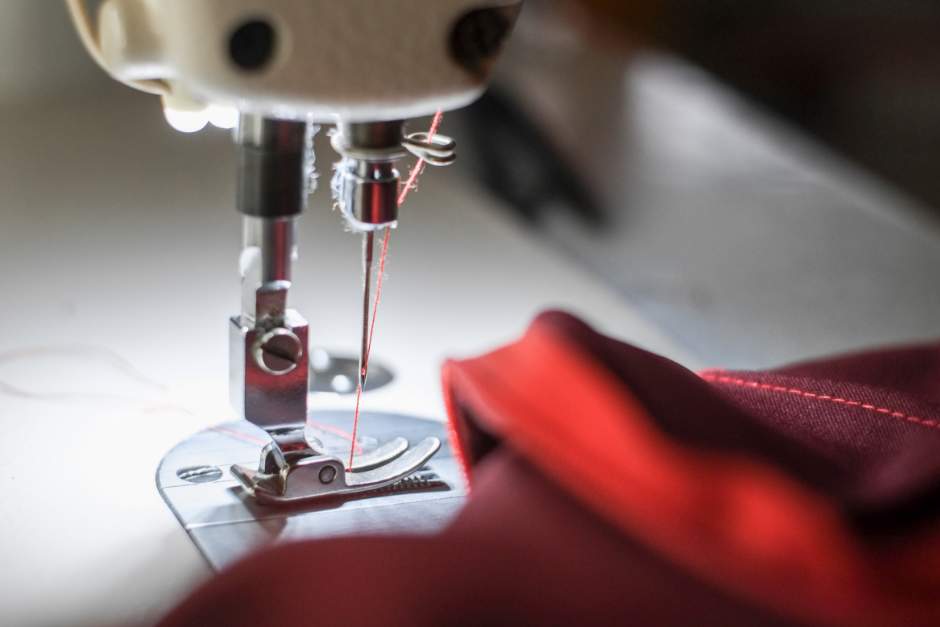Industrial Sewing Services Pricing: A Comprehensive Guide

Table of Contents For Our Industrial Sewing Services Pricing Guide
- Introduction
- Understanding the Components of Pricing
- How to Negotiate Pricing with Service Providers
- Vinyl Technology: Your Industrial Sewing Partners
- Key Takeaways
Getting a handle on the ins and outs of industrial sewing services pricing is a big deal for your business. There’s a lot that goes into the final cost—from materials and labor to overhead expenses—that can really add up. Knowing what drives these costs isn’t just about keeping your spending in line – it’s about making smart choices that could affect your profits.
This understanding arms you with the knowledge to strike better deals and make well-informed decisions.
In today’s cutthroat market, not being clued in on these pricing factors can seriously trip you up. You might end up overspending, getting shoddy work, or facing delays.
If you understand what influences pricing, you’re better equipped to ask the right questions, size up service providers, and see potential issues before they arise. This kind of preparedness not only helps smooth out your operations but also strengthens long-term relationships with your vendors.
Understanding the Components of Industrial Sewing Services Pricing
In the world of industrial sewing, getting a grip on what drives pricing is essential for making smart business choices. One of the biggest factors that can push costs up is how complex a project is. Detailed designs often need specialized machines and highly skilled workers, which naturally come with a higher price tag.
Plus, if you’re in a rush, expect to pay more. Rush jobs usually require overtime and can mess up the regular workflow, leading to extra charges.
But not everything drives costs up. Some factors can actually help keep them down. For example, simpler designs that use standard materials are usually cheaper to produce. Ordering in bulk can also bring down the cost per unit since many providers offer discounts for large orders. Planning your projects ahead of time allows for better use of resources, which can save money, too.
So, whether costs go up or down depends on a bunch of things—complexity, urgency, materials, and labor being the main ones. But if you plan effectively and understand what’s driving the pricing, you can negotiate better deals and make smarter decisions. This isn’t just about trimming costs—it’s a strategic move that can benefit your business in the long run.
For more information on this topic, you may also want to take a moment to review this guide from WarehousingAndFulfillment.com.
Material Costs

Material costs are a huge factor in the pricing game for industrial sewing and services like RF seal welding. The fabric you pick can seriously impact the final cost. For example, high-end, specialized fabrics like ballistic nylon or Kevlar are way pricier than more common materials like cotton or polyester. But it’s not just about the money—the fabric you choose also affects how durable and functional the finished product will be.
Threads are another cost you’ve got to keep an eye on. Industrial-grade threads, usually made from polyester or nylon, cost more than regular threads but offer better strength and durability. These tougher threads are crucial for products that need to hold up under tough conditions or heavy use.
Then you’ve got accessories — zippers, buttons, Velcro — all of which can add to material costs. Going for high-quality accessories might bump up the price, but they tend to perform better and last longer. For example, if you need corrosion-resistant zippers for outdoor gear, that’s going to push up the overall cost.
Labor Costs
Labor costs play a big role in your project’s overall budget. Skilled workers tend to charge more, but their expertise is often essential for complex projects. On the other hand, unskilled labor is cheaper but might lead to longer production times or lower quality, which could hurt the project’s outcome.
Finding the right balance between skilled and unskilled labor can make or break your budget. Investing in skilled labor usually means higher upfront costs, but can pay off in quality and efficiency. On the flip side, while unskilled labor might save you money initially, it could result in delays or subpar work.
That’s why it’s so important to evaluate what level of skill your project truly needs and budget accordingly. By understanding these labor costs, you’re better equipped to make smart decisions and negotiate better deals with your service providers.
Overhead Costs
Don’t forget about overhead costs—things like utilities and rent for the workspace. These are fixed expenses that providers need to cover, and they often pass these costs onto you.
Rent or lease expenses for the workspace are a key part of overhead costs. The location and size of a facility can really drive these expenses up or down. Service providers typically roll these overhead costs into the price they charge you for a project. So, getting a handle on these expenses can give you a clearer picture of why you’re paying what you are.
Industry Standards and Variances
When looking at pricing in industrial sewing, you’ve got to keep industry standards and regional differences in mind. One major factor is where your service provider is located.
Regional Variations
Labor rates can swing quite a bit depending on the region.
In places where the cost of living is higher, you’ll likely pay more for labor. Also, the availability of materials can change from one area to another, which can impact how much you end up spending on raw materials for your project.
Seasonal Variations
Seasonal factors can definitely impact industrial sewing services pricing. When demand for industrial sewing services spikes during peak seasons, prices tend to go up. Material costs can also shift depending on the time of year. For instance, natural fibers like cotton might be pricier during off-harvest seasons.
Being aware of these seasonal trends can help you plan your projects better.
Grasping these industry standards and variances gives you a clearer picture of how pricing works. It helps you anticipate possible cost changes and plan accordingly. This kind of knowledge is crucial for negotiating better deals and making smart decisions for your business.
How to Negotiate Industrial Sewing Service Pricing with Providers
Negotiating pricing in industrial sewing isn’t just about haggling—it’s about being prepared and having a strategy. First off, figure out what’s most important to you. Is it the quality of the work, how fast it gets done, or maybe a mix of both?
Knowing your priorities will help steer the negotiation in the right direction.
Do your homework. Research potential suppliers before you start talking numbers. Find out what they specialize in, whether they have a minimum order quantity (MOQ), and anything else that might be relevant. This info will arm you with the right questions to ask and help you understand how much leverage you have.
When you’re actually negotiating, clear communication is key. Be ready to talk about everything—price, MOQ, payment terms, the whole package. Don’t be shy about digging into details that could lead to a better deal. For example, even if a supplier has a high MOQ, they might be open to adjusting other terms, like offering quicker delivery for an extra cost.
Also, make sure you’re comparing prices. Get quotes from a few different suppliers so you know what the going rate is. This not only gives you options but also puts you in a stronger position to negotiate.
And remember—sometimes walking away is your best move. If a supplier’s terms don’t match what you need or can afford, it’s better to keep looking than to agree to something that doesn’t work for you.
Understanding Market Trends
Market trends have a big impact on the pricing of industrial sewing services. Take seasonal trends, for instance—they can cause demand and material costs to swing up and down. When demand peaks during busy seasons, prices usually climb. Likewise, the cost and availability of materials can change with the seasons, depending on the industry.
Economic trends are another factor to keep in mind. Things like inflation, currency exchange rates, and overall global economic conditions can affect what you pay for materials and labor. For example, when the economy is strong, labor costs tend to go up. But during economic downturns, you might find more competitive pricing as providers try to bring in more business.
Keeping an eye on these market trends can help you plan projects more efficiently and might give you extra leverage in negotiations.
This knowledge is key for making smart decisions and getting the most out of your budget.
Leveraging Volume Discounts
One smart way to cut down the cost of industrial sewing services is by taking advantage of volume discounts. Many providers are willing to lower their rates if you place a large order. When you order in bulk, it helps the provider streamline their production, and those savings often get passed on to you.
Another strategy to consider is signing a long-term contract. By committing to a longer partnership, you provide the service provider with a steady stream of business, which can make them more likely to offer you discounted rates. These contracts often include clauses that allow for price adjustments based on market changes, giving both you and the provider some financial security.
Using these strategies can lead to significant savings. Not only does this help you stay within budget, but it also builds a strong, mutually beneficial relationship with your provider.
Knowing how to effectively leverage volume discounts is crucial for getting the most out of your investment in industrial sewing services.
Vinyl Technology: Your Industrial Sewing Services Partner
Navigating the complexities of pricing in industrial sewing is definitely a challenge. You need to get a handle on all the components—like material and labor costs—and stay tuned into industry standards and market trends. Each of these factors plays a key role in what you end up paying. With this knowledge, you’re in a better spot to negotiate with service providers. Using strategies like volume discounts and long-term contracts can also help you save some serious money.
At Vinyl Technology, we know how important it is to offer safe, reliable, and cost-effective solutions for your industrial sewing needs. Our commitment to quality and efficiency has made us a trusted partner for businesses looking for custom RF welding, RF sealing, and industrial sewing services.
Get in touch with us today to see how we can help.
Key Takeaways for Industrial Sewing Services Pricing
- Understanding Pricing: Grasping the various components of pricing, such as material and labor costs, is essential for making informed decisions and negotiating effectively.
- Material Costs: The choice of fabric, threads, and accessories can significantly impact the overall cost and quality of the final product.
- Labor Costs: Balancing the skill level required for your project is crucial for optimizing costs. Skilled labor comes at a premium but ensures high-quality output.
- Overhead Costs: Utilities and workspace rent are often overlooked but are integral to the pricing structure.
- Industry Variances: Regional and seasonal factors can influence labor rates and material costs, affecting the overall project cost.
- Negotiation Strategies: Research, clear communication, and price comparison are key tactics for effective negotiation with service providers.
- Market Trends: Being aware of seasonal and economic trends can help you plan your projects more effectively and provide additional negotiating leverage.
- Volume Discounts: Leveraging bulk orders and long-term contracts can result in substantial cost savings.
- Vinyl Technology: A trusted partner for businesses seeking custom RF welding, RF sealing, and industrial sewing services focused on quality and efficiency.

